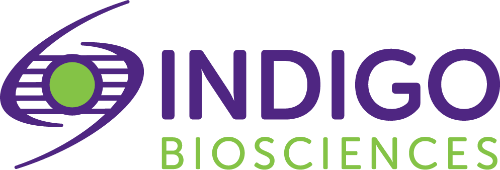What is Drug Repurposing?
As drug discovery continues to look towards smaller and smaller patient pools and hyper-specific disease states, the demand for new drugs grows rampant. Combined with a lengthy development timeline and massive costs, the development process for new chemical entities (NCEs) is unable to provide solutions for many unmet medical needs.1 Drug repurposing, or repositioning, is the process by which researchers return their attention to historical drug candidates that failed in clinical trials, or approved drugs currently on the market, with the aim to re-evaluate their therapeutic potential for different diseases or unmet needs.1 Drug repurposing provides a cost- and time-saving solution for pharmaceutical companies, academic laboratories, and investor-backed start-up ventures looking to recover investments made on failed drugs or develop therapies for disease states using drugs already available on the market. In this post we will discuss why drug repurposing is a beneficial process, the methods used in drug repurposing, and how cell-based assays fit into the mix.
Why is Drug Repurposing Relevant?
The drug development process takes ten to fifteen years on average and costs anywhere from $113 million to upwards of $6 billion to produce a single drug.2,3 An NCE could be millions of dollars and several years into development before it fails in a clinical trial, putting companies out a considerable investment and leaving patients years away from relief. Given this fact, drug repurposing provides a possible avenue to help both researchers and patients. Finding new uses for pre-existing drugs is also an opportunity to further understand disease biology. Though drug repurposing can cut costs for pharmaceutical companies, there is still further investment and risk involved as trials can still fail down the line. In a perfect world, all drugs on the path to repurposing would have already passed safety and efficacy testing and be active in the same concentration range as the original intended use, 1 thus providing an excellent jumping-off point for researchers that would “bypass” many of the safety testing regulations necessary in the drug development process.
The Methods of Drug Repurposing
Drug repurposing methodologies make use of a range of available pathways, mechanisms, or -omics data. Some computational methods such as Blinded Search require little chemical data and utilize serendipitous identification or phenotypic screening to identify targets, whereas the Signature-Based method utilizes gene signatures from disease -omics data to identify previously unrecognized drug targets or mechanisms.4 Another methodology, Target-based Screening, consists of in vitro/in vivo high throughput screening (HTS) and in silico screening of drug compound libraries, allowing researchers to screen drugs with known chemical structures in record time.4 Targeted-mechanism-based Screening utilizes treatment -omics data, protein interaction data, and signaling pathway information to not only characterize unknown drug mechanisms but also identify new mechanisms related to diseases and drugs.4 Blinded Method is used for compounds where little to no mechanistic knowledge exists and can be applied to a wide variety of drugs and diseases. Finally, Knowledge- or Target-based methods utilize available data to construct new mechanisms and identify different pathways.4 In addition, individual methods from this array of options can be combined and tailored for specific drug screening processes depending on the data available for one’s study.
Cell-Based Receptor Assays in Drug Repurposing
In vitro receptor assays are part of the target-based methodology for screening compound activity against specific receptors found in the body. Using these assays, large libraries of compounds can be screened quickly for both on- and off-target (intentional or unintentional) effects on multiple different receptors. Many drugs display a wide spectrum of target specificity, activating multiple receptors at the same time. This is sometimes referred to as “polypharmacology”, and it can lead to drug-drug interactions if receptor activity is not evaluated and well understood. While this can be viewed as a liability for a given compound, it also provides an opportunity to repurpose that compound for multiple therapeutic applications. For example, suppose a hypothetical compound that interacts with RORγ makes it through clinical trials as an anti-inflammatory treatment. Now suppose that this compound also demonstrated anti-androgenic activity during safety pharmacology screening. Since anti-androgenic activity is the basis of a variety of treatments for prostate cancer, this compound may very well be of interest as a therapy for treating this disease. By using in vitro assays to develop a receptor profile for a given compound, not only can one determine on- and off-target effects, but one can also leverage those off-target effects to find new applications for drugs that have already made it through clinical trials. This approach can provide a cost-effective means to develop new therapies using existing compounds with demonstrated activity and safety profiles.
INDIGO Biosciences Assays for Drug Repurposing
INDIGO has the largest portfolio of cell-based nuclear receptor assays in the world. Our luciferase assays help you identify compounds with the highest selectivity and the lowest potential for unwanted effects and off-target responses. We also offer screening services in our own lab, allowing you to simply send us your samples and obtain high-quality study reports and data files expeditiously Our broad portfolio of nuclear receptors makes us an optimal and cost-effective option for drug repurposing screens and safety profiling. Whether for nuclear receptor or in vitro toxicology solutions, our receptor portfolio, ease of use, and quick turnarounds will get you the data you want.
